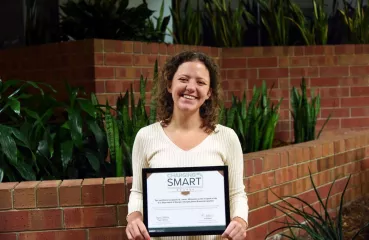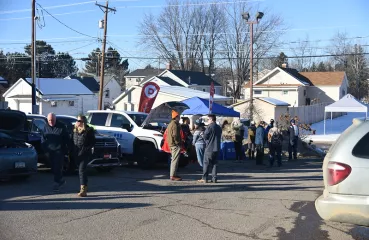On December 4, 2024, I had the honor of attending the Minnesota Valley Transit Authority’s (MVTA) introduction ceremony for their cohort of brand new electric micro-buses, called the “E-Jest.” These five vehicles will be the first fully electric mini-buses of their kind operating anywhere in the Midwest!
In making my way to the ceremony, I traversed down to the 157th Street Transit Station in Apple Valley in far less than favorable weather — strong winds plus a cutting mix of precipitation somewhere between sleet and snow, in typical Minnesota fashion. The commemoration began with an unveiling celebration; refreshments and info-packets were provided to us before brief introductions were made by some notable Apple Valley officials: MVTA CEO Luther Wynder, Burnsville City Council Member Dan Kealey, and finally by the mayor of Apple Valley, Clint Hooppaw.

 Wynder explained during his remarks that the E-Jest vehicles would be used for something called ‘microtransit.’ Microtransit is distinct from traditional transit routes by acting more closely to an on-demand rideshare program. The intention is that the new E-Jest vehicles will supplement the existing MVTA routes by providing connections for passengers between transit centers and defined bus paths, essentially filling in the gaps of service. He says that “this smaller bus is really designed to get in those neighborhoods to pick those individuals up.”
Wynder explained during his remarks that the E-Jest vehicles would be used for something called ‘microtransit.’ Microtransit is distinct from traditional transit routes by acting more closely to an on-demand rideshare program. The intention is that the new E-Jest vehicles will supplement the existing MVTA routes by providing connections for passengers between transit centers and defined bus paths, essentially filling in the gaps of service. He says that “this smaller bus is really designed to get in those neighborhoods to pick those individuals up.”  Following the opening remarks, we were granted a mock-service demonstration of the E-Jest in action. Upon first impression, I was surprised at the unique aesthetic value these mini-buses possessed. It is a very uncommon design that is intended to stand out — bright orange and an almost boxy frame. The design challenges the idea of what public bus service should look like, as it’s not quite something that you’d expect to see operating in the Midwest. Just before the demonstration rides began, fellow guests and I lined up to take photos of the buses, which generated much anticipatory excitement to experience them firsthand.
Following the opening remarks, we were granted a mock-service demonstration of the E-Jest in action. Upon first impression, I was surprised at the unique aesthetic value these mini-buses possessed. It is a very uncommon design that is intended to stand out — bright orange and an almost boxy frame. The design challenges the idea of what public bus service should look like, as it’s not quite something that you’d expect to see operating in the Midwest. Just before the demonstration rides began, fellow guests and I lined up to take photos of the buses, which generated much anticipatory excitement to experience them firsthand.




